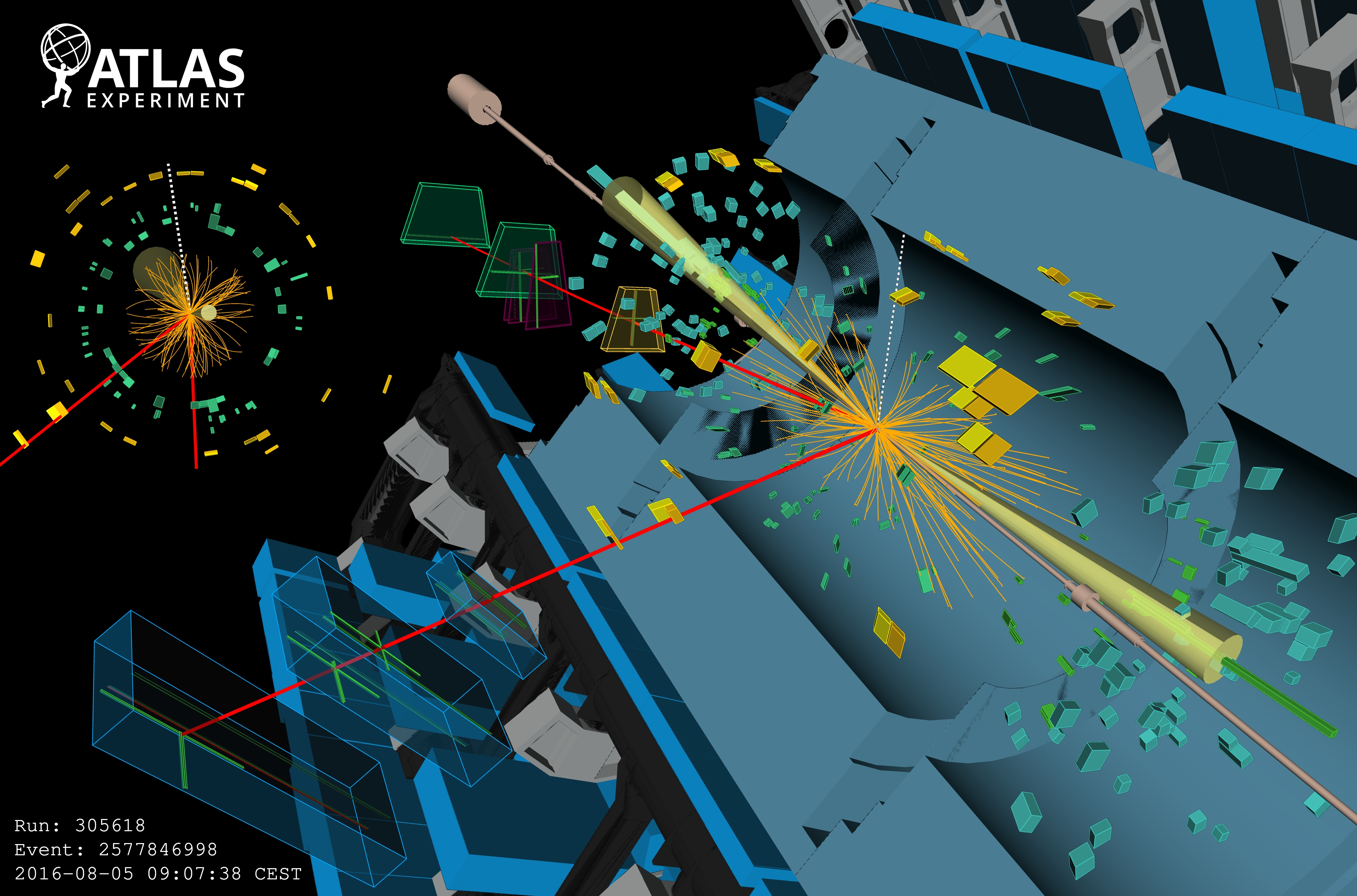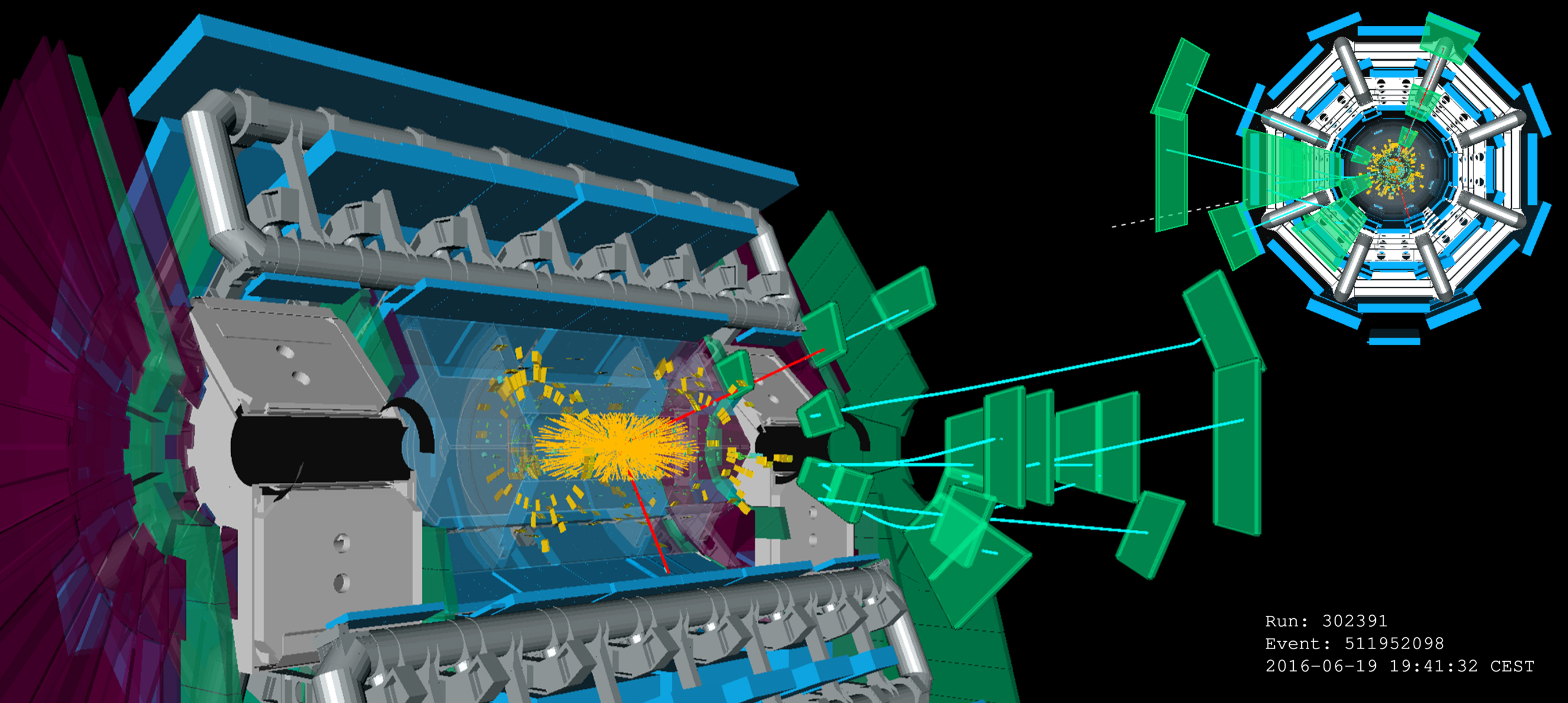Exploring the W boson at extreme mass scales
15 April 2025 | By
Since their discovery in the 1980s, W bosons have been extensively studied by physicists. As carriers of the weak force, precise measurements of their properties help improve the understanding of the Standard Model's electroweak sector and may provide hints for what lies beyond it.

Despite this intensive study, there’s still much to uncover, as W bosons are only well-understood at their mass of about 80 GeV (the “peak” region). In a recent result presented at the Lake Louise Winter Institute, the ATLAS Collaboration achieved the first-ever measurement of W-boson production probability – or cross section – at masses far beyond the peak region (see Figure 1).
Studying W bosons is no easy task. They are highly unstable particles that decay almost immediately into, for instance, an electron (e) or muon (μ) and their corresponding neutrino (v). Measuring these decay products can tell physicists about the mass of the W boson that created them – but there’s a catch. While electrons and muons leave a clear signature in the detector – making them ideal candidates for high-precision measurements – the neutrino evades detection. By carefully tracking all the visible particles and applying momentum conservation, physicists can infer the neutrino's momentum in the plane perpendicular to the beam (transverse plane) — where the initial total momentum is known to be zero. However, with only the neutrino's transverse momentum available, physicists can only reconstruct the W boson’s transverse mass (mTW) rather than its full mass.
This new ATLAS measurement opens new paths in the hunt for physics beyond the Standard Model and sharpens our understanding of the proton’s inner structure.
Using proton-proton collision data from LHC Run 2 (2015–2018), ATLAS physicists measured the cross section for W bosons with mTW between 200 GeV and 5 TeV – up to 60 times the W mass. Research at such scales comes with many challenges. Achieving a precise measurement requires a good estimation of background processes and a careful treatment of detector resolution and efficiency effects.
So what did ATLAS learn from these high-transverse-mass bosons? Figure 2 shows the decrease in the W boson’s cross section by over seven orders of magnitude as the transverse mass increases, underlining the rarity of these W bosons. The measured cross sections are generally consistent with Standard Model expectations, though these predictions could themselves be refined. Key to these predictions are parton distribution functions (PDFs), which describe the vast, dynamic “sea” of quarks and gluons that make up the internal structure of protons. Given the large PDF uncertainty (shown in green in Figure 2) and spread between different predictions, there is clear potential to improve knowledge of the proton’s substructure given that this measurement exhibits small uncertainties up to about mTW = 1 TeV.
Beyond probing the proton, W boson measurements at high transverse masses also provide a unique testbed for physics beyond the Standard Model. One of the most fundamental principles of the Standard Model is lepton flavour universality (LFU), which requires W bosons to interact in the same way with electrons as with muons. In this new result, LFU is tested for the first time for high transverse-masses. As shown in Figure 3, the measured ratio of W→eν to W→μν cross sections matches unity all the way up to 5 TeV, confirming the expectation of LFU.


But could there still be new physics beyond our energy reach? This was also probed via an Effective Field Theory (EFT) approach — a framework that captures possible effects of unknown high-energy physics through additional terms in the equations that describe the interaction of the W boson with its decay products and that physicists can test at current energies. The measurement sets the strongest constraints to date on a certain type of interactions between leptons and quarks, pushing the boundaries of where new physics could still be hiding.
In summary, the ATLAS Collaboration’s new measurement of W boson cross-sections at high transverse masses is an important addition to its impressive physics programme. Not only will it help to sharpen the understanding of the proton’s inner structure and to test electroweak interactions but also plays a pivotal role in the search for new physics at the highest energy scales at the LHC.
Learn more
- Measurement of double-differential charged-current Drell-Yan cross-sections at high transverse masses in proton-proton collisions at 13 TeV with the ATLAS detector (arXiv:2502.21088, see figures)
- Lake Louise Winter Institute 2025 presentation by Frank Ellinghaus: Measurements of W, Z and Drell-Yan processes in ATLAS
- Moriond QCD 2025 presentation by James Inglis: ATLAS measurement of DY charged current in high-mT regime and W cross-sections from low pile-up data
- Deep Inelastic Scattering 2025 presentation by Johanna Wanda Kraus: Measurements of W, Z and Drell-Yan processes in ATLAS



